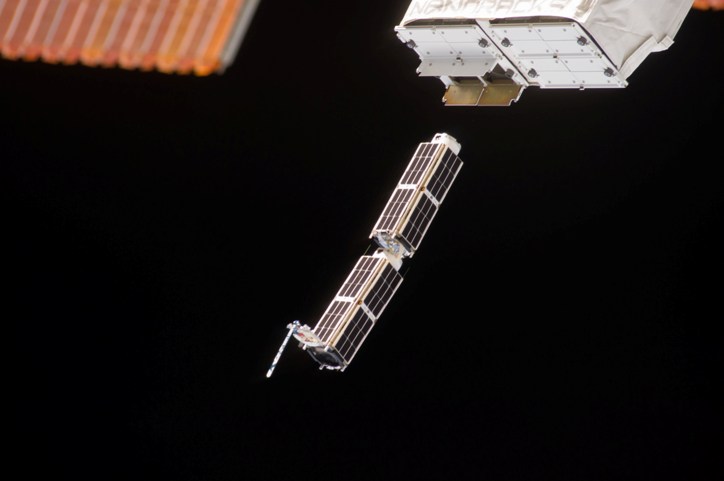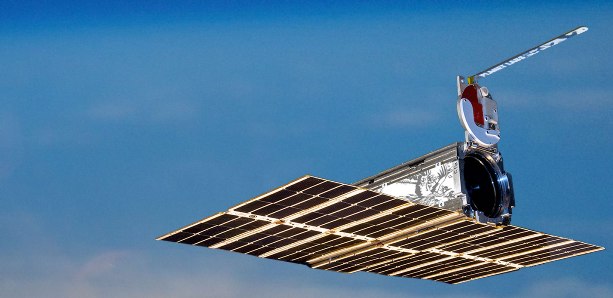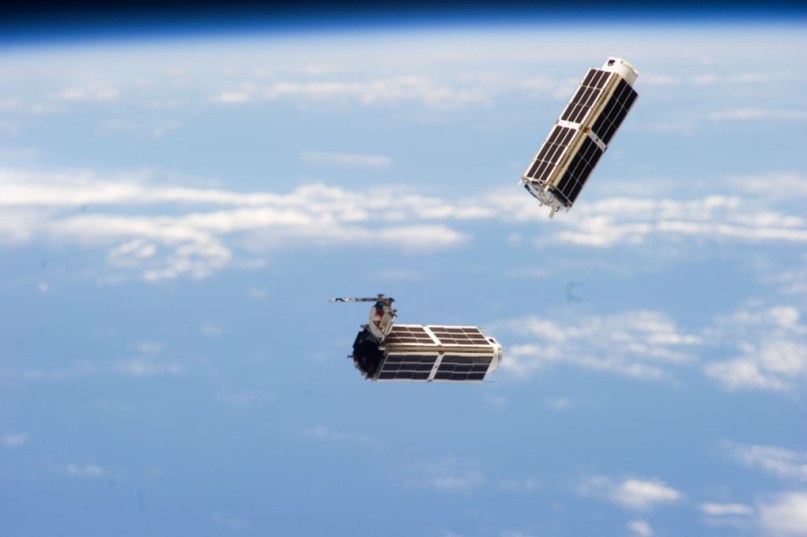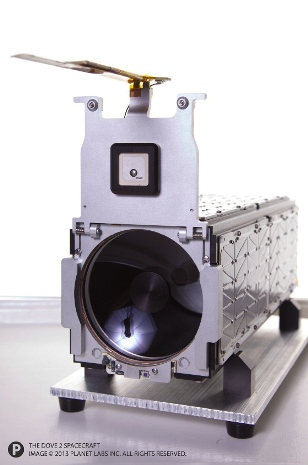Planet Labs Doves Fly: Difference between revisions
Siterunner (talk | contribs) No edit summary |
Siterunner (talk | contribs) No edit summary |
||
| Line 210: | Line 210: | ||
* http://www.space.com/22622-planet-labs-dove-satellite-photos.html | * http://www.space.com/22622-planet-labs-dove-satellite-photos.html | ||
* http://www.planet.com/press/ | * http://www.planet.com/press/ | ||
Revision as of 13:00, 16 August 2018
"Planet's goal? To photograph every place on the planet every day..."
Planet is already (2014) photographing one-third of the world everyday. Will Marshall, the co-founder and chief executive officer of Planet, explains how these images will comprise a global Earth archive of change.
“We have this psychology that the Earth is static-ish. But I think that has a lot to do with maps we were brought up with, and the fact that the satellite maps we see online are static.”
Earth is Dynamic, Changing, Living, Breathing
Earth Science Research from Space
Welcome to Planet Explorer! - https://www.planet.com/explorer
Will Marshall: “When we get an image down, whenever we compare it to the previous image we took of that same place a couple of days before—every time, we see changes. Either a tree has been taken down, a building has been added, a truck or a ship moves, and sometimes a river moves and you don’t notice it. A field is tilled. Things change every day in every picture we get.”
Planet's new acquisition from Google of the high-resolution Terra Bella satellites greatly expands the micro-satellite industry and its capabilities to monitor the Earth..."
2017
Planet Acquires Google’s Satellite Business
With the deal, Planet will receive seven high-resolution satellites that Terra Bella currently has in orbit. Planet plans to launch an additional six of Terra Bella’s satellites. They are larger than Planet’s existing satellites and offer up to six times better imagery resolution...
Google acquired its satellite division, called Skybox Imaging, for $500 million in 2014.
2016
Planet Labs is now just 'Planet'
Announcement
Micro-satellites take flight
- Over the past three years PlanetLabs has built almost 200 Dove micro-satellites.
Planet Labs Micro-satellites Monitor Earth Systems
"Planet Labs platform is enabled by 'agile aerospace'. This means that we 1) embrace Silicon Valley best practices across spacecraft development, mission control, and product development, and 2) leverage heavy investment made in consumer technology. We’re applying Moore’s Law to satellites."
- An API for the Planet #PlanetLabs Open Source Conference keynote
2014
Launch of new Flock of Dove Satellites to Image Earth
"Rapid cadence imagery, like Planet Labs is developing, helps us become better, more sustainable stewards of Earth."
◊
July 2014
Cygnus, Orbital Sciences rocket successfully lifts off...
Planet Labs 'Dove' nano-satellites on route to the ISS for space deployment...
The launch comes a day after a manned spaceflight milestone: the 5,000th day humans have lived inside the $100 billion International Space Station.
Kirt Costello, assistant International Space Station program scientist told reporters: "Really it's an amazing feat to be able to already have completed so much science."
"In those 5,000 days, not only have we managed to assemble this unique laboratory, but we've been able to conduct 1,600 experiments to date."
"We are now in a period where utilization is really the prime goal of the space station."
A Platform for Research
Democratizing Space -- #EarthScience
"Now that station managers are focused on using the lab rather than building it, commercial companies also have found ways to use the astronaut outpost as a platform for their research."
Planet Labs, a San Francisco-based start-up that aims to image the whole Earth once a day, is sending a new constellation of 28 small satellites to be deployed from the station via Orb-2.
Planet Labs Photos of Earth from Space
Student science onboard -- 15 student science experiments chosen from more than 1,000 proposals through NASA's Student Spaceflight Experiments Program (SSEP).
Students were inspired by Canadian astronaut Chris Hadfield's viral videos in space Highlights, Water in space, Space control music vid, Space food. Suni Williams tour of the ISS
The student experiments were prepared by Nanoracks, which also has 28 of Planet Labs' CubeSats on board the Cygnus.
The CubeSats will be deployed into orbit through Nanoracks’ smallsat deployment system.
◊
Web-based, Open API
Visit Planet.com where everyone can access Planet Labs' #EarthImaging data... Earth stewardship, planet citizens @work.
Will Marshall -- @Skoll World Forum
“We are motivated to make information about the changing planet available to all people, especially the people who need it the most,” said Robbie Schingler, co-founder of Planet Labs.
“The imagery could be used by anyone who cares about changes in land use over time.”
◊
Dove Satellites Going Orbital
Planet Labs 'Dove' micro-satellites - Dove deployment GIF
Planet Labs 'flock' / New Scientist Flocks of Doves
"NanoRacks" enabling Dove deployment via the International Space Station
CubeSats CubeSat Overview-Wikipedia
◊
Dove2 Spacecraft CubeSat
◊
◊
Forbes - Planet Labs democratizing space
SpaceNews - Planet Labs operations
Planet Citizen/Global Citizen
- -






